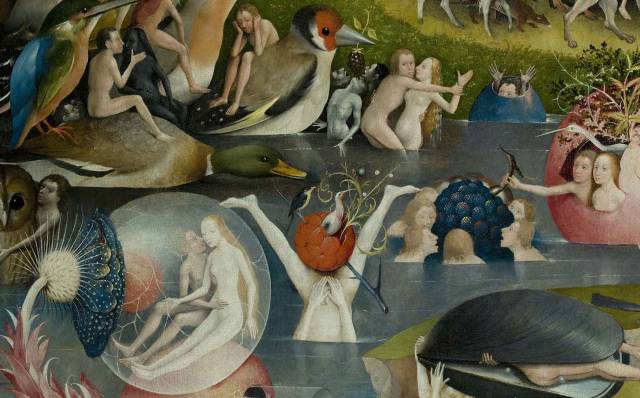
 Hieronymus Bosch died in 1516 leaving behind precisely two dozen paintings that have filled our dreams and nightmares ever since. In his elaborate triptychs and panels there are visions of hell that give horror movies a run for their money, fantastical creatures part human, part animal playing instruments or serving as instruments of torture are doomed to repeat their miserable actions for all of eternity. His works are so elaborate that it was only until 2015 that a clever student discovered a song Bosch had carefully painted on the buttocks of one of the poor souls in his The Garden of Earthly Delights. Perhaps the extremely detailed nature of his work made him one of the least prolific of all the iconic painters, but who can complain about quantity when there is so much to see in what he left us?
Hieronymus Bosch died in 1516 leaving behind precisely two dozen paintings that have filled our dreams and nightmares ever since. In his elaborate triptychs and panels there are visions of hell that give horror movies a run for their money, fantastical creatures part human, part animal playing instruments or serving as instruments of torture are doomed to repeat their miserable actions for all of eternity. His works are so elaborate that it was only until 2015 that a clever student discovered a song Bosch had carefully painted on the buttocks of one of the poor souls in his The Garden of Earthly Delights. Perhaps the extremely detailed nature of his work made him one of the least prolific of all the iconic painters, but who can complain about quantity when there is so much to see in what he left us?
In Pieter van Huystee’s documentary Hieronymus Bosch: Touched by the Devil the meaning of the artist’s work is only second to the filmmaker’s obsession with defining what makes a Bosch authentic. He chronicles the way in which historians examine the works using state of the art technology and follows investigators as they try to corroborate the authenticity of a painting in America. The film also focuses on the clash between Dutch museums and El Prado which has housed The Garden of Earthly Delights for over 400 years. Bosch himself becomes a supporting character in something that feels like CSI: Art History.
Unsurprisingly the film becomes most alive when it focuses on the work itself. A scene in which Bosch is revealed as a perpetuator of Islamophobia is electrifying, a reminder of why the artist’s work has captured our imaginations for so long and why it remains relevant. The movie would have benefitted from being less of a procedural and more of an interpretative work. To the many audience members who will never get to see Bosch’s paintings in person, it would have been more exciting to see what they look like using infrared cameras or to see them in extreme close ups, the film camera revealing aspects too small for the eye to capture at first glance.
Bosch is often deemed as a mysterious figure and the film fails to dig into why we know so little about him. When an El Prado official suggests that a massive fire in his hometown might have sparked the images of eternal damnation that plagues his work as an adult, the documentary thrives, but as we go through yet another infrared examination no one will blame you if you head for an art book instead.